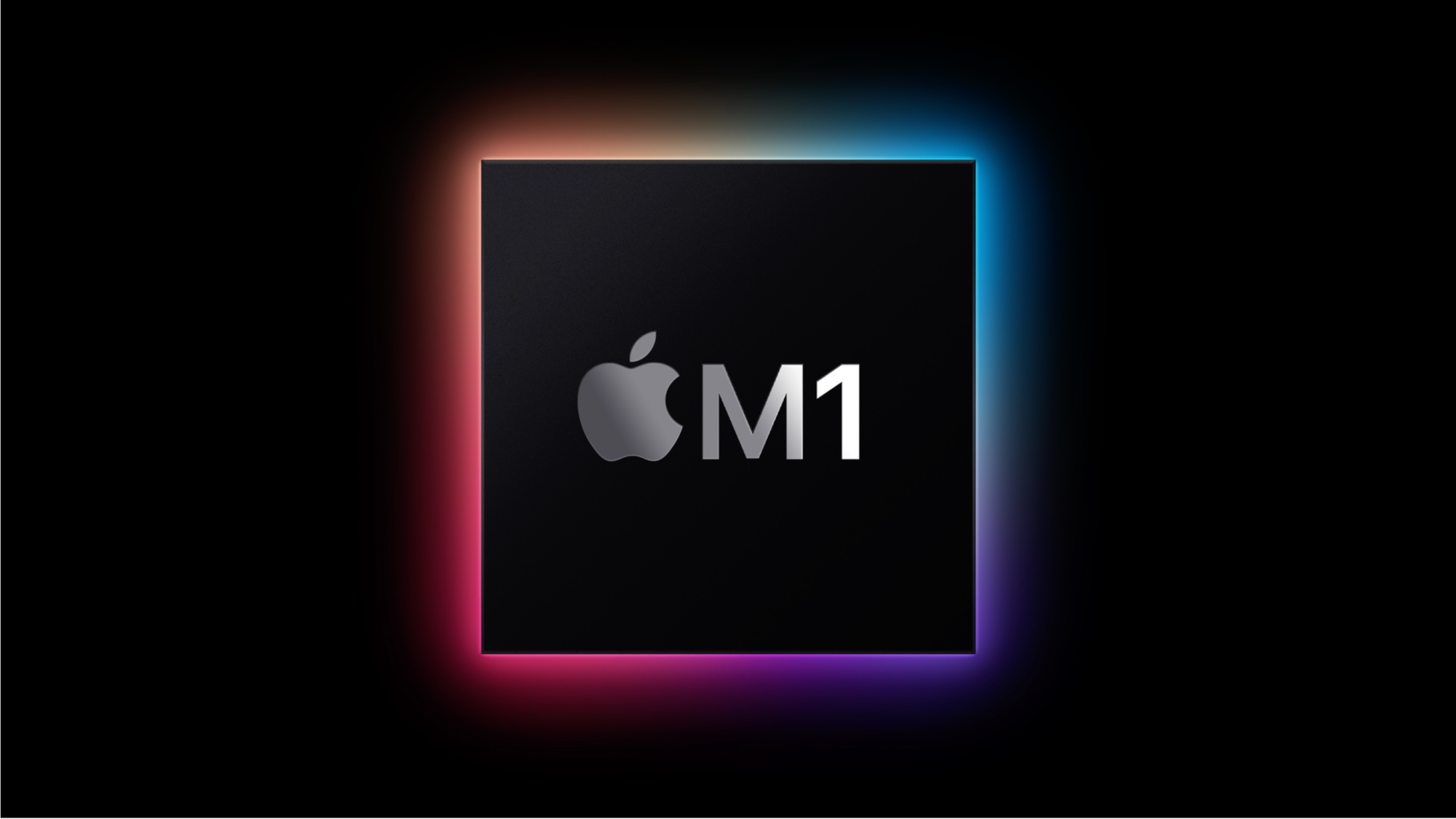Apple M1 chip specs, release date, and how it compares to Intel
Bye, bye Intel: Apple Silicon has arrived, with the M1 chip powering MacBooks and the new Mac mini

It seems like we've only just met the M1 chip, Apple's desktop- and laptop-grade systems-on-chip, and yet we're already learning about its successors -- as rumors point to an M1X chip coming very soon in Apple's next Macs.
But what's available today is what matters, and what's available today is pretty impressive in its own right. Our MacBook Pro with M1 review, MacBook Air with M1 review and Mac mini with M1 review show that Apple's really flipped the script by using its own processors.
Switching to these new chips allows for major changes up and down Apple's laptops and desktops — and no Mac will be left behind (eventually). And, yes, these chips will be based on the same technology as the A-series iPhone and iPad processors with some important modifications for Macs.
While it may seem like inside baseball for some, Apple Silicon has massive ramifications for Apple's computers. You can expect much faster performance, vastly improved graphics and longer battery life. Here's everything you need to know about the Apple M1 chip and the laptops it powers.
Apple M1 chip release date
The first Macs running on the Apple M1 chip dropped on Nov. 17, 2020. Announced on Nov. 10 at the "One more thing," event, the first three Macs running on Apple's own chips are the Apple Silicon MacBook Air, Apple Silicon MacBook Pro and even the Apple Silicon Mac mini.
As for the next Apple silicon? Well after Apple blew us away with the performance of the improved M1 Pro and M1 Max chips on offer in its 2021 MacBook Pros, it released a new Apple M2 chip in 2022. The M2 debuts in new 13-inch MacBook Air 2022 and MacBook Pro 2022 models, which are advertised as delivering up to 15-20 hours of video playback on a single charge thanks to M2 power efficiency.
Apple M1 chip vs Intel performance
Apple's rather massive claims for how its M1-based Macs will outperform its Intel-based Macs are pretty bold — and one hopes they'll pay off and lead to similarly strong real-life examples.
Get instant access to breaking news, the hottest reviews, great deals and helpful tips.
Both M1 MacBooks are rated for substantial leaps over their predecessors. Specifically, Apple notes the M1 MacBook Air is 3.5x as fast as the most-recent Intel MacBook Air, and that the M1-based MacBook Pro is 2.8x as fast as its predecessor. That's the kind of performance that could topple the Intel Core i9 version of the 16-inch MacBook Pro (which isn't one of the first round of Macs getting ported to M1 chips).
Apple also claims that its M1 Mac SSD storage speeds are up to twice as fast as those inside Intel-based MacBooks. The M1 MacBook Pro (3.3 GBps read) and M1 Mac mini (3.4GBps read and write) will also see faster speeds.
Apple M1 chip MacBook Air and MacBook Pro
The M1 chips in both the MacBook Air and MacBook Pro both have 8 CPU cores, split between 4 high-performance cores and 4 high-efficiency cores. While the entry-level $999 M1 MacBook Air has a 7-core GPU, the $1,249 M1 MacBook Air gives a little more oomph, with an 8-core GPU.
The $1,299 M1 MacBook Pro has the same M1 as the $1,249 MacBook Air, but it should be faster because it's got a fan-based design (which will enable more cooling), and the Air does not.
Both M1-based MacBook Pros have dual Thunderbolt / USB 4 ports, while the Pro is rated by Apple for having a brighter screen (400 nits vs 500 nits), and longer battery life, as we'll get to below.
Apple M1 Mac prices
While some were hoping Apple would lower its MacBook prices (hey, they make the chips, they don't have to buy them anymore, right?) that did not come to be. The Apple M1-based MacBook Air starts at $999, just like the Intel version it replaces, as does the M1-based MacBook Pro (still $1,299). Both have the same storage and RAM as their predecessors.
We did get one price drop: the M1-based Mac mini now starts at $699, $100 less than the previous version.
Apple M1 MacBook battery life
The M1-based MacBooks blew their Intel versions out of the water on battery life. Apple rates the new Air as lasting up to 15 hours on web browsing (its predecessor lasted 9:31 on our web browsing-based battery test) — and the M1 Air posted a time of 14:41 on that same test.
The company even notes video calls won't drain your battery as much, noting that the M1 MacBook Air will "extend FaceTime and other video calls for up to twice as long on a single charge."
As for the MacBook Pro? It lasts even longer. Its epic 16:32 time on our battery test comes close to Apple's claim of up to 17 hours of web browsing. Apple rates the M1 MacBook Pro as offering twice the battery life you get in the previous MacBook Pro.
Apple M1 chip apps
One of the biggest Apple M1 chip features is the ability to run iOS and iPadOS apps, which is possible because the M1 chip is an ARM-based processor, just like the A-series chips in the iPhone and iPad. That means that developers will be able to bring their iPhone and iPad apps over, with little work. Not all developers will take that opportunity, though.
Oh, and just because we're leaving Intel processors in the past doesn't mean the apps made for those computers won't work. Apple's applying a combination of processes to make this all work.
First off, Apple's updated all of its own applications to support the M1 chip — as you'd expect. Then, third-party developers have had instructions (since June) for how to create "universal binary" versions of their apps that support both Apple silicon and Intel-based Macs.
And for all the apps that may get "left behind?" Well, Apple's done this before, when it transitioned from PowerPC processors to Intel, so it's got Rosetta — the new version of the app translation technology it used for that first transition. Rosetta 2 will process apps as you install them, and support updating extensions as well, so as much work is done up front as possible.
Apple M1 chip Macs outlook
Apple's decision to move to Apple Silicon isn't just motivated by an improved user experience, as a greater control of its processor supply chain will likely reduce Apple's own costs.
We just hope that this doesn't come at a cost to how the Mac works. Once we get to test these laptops for ourselves, and see how apps run on them, we'll have greater clarity on that.
Tim Cook rightly positioned Apple Silicon as one of the biggest moves in the Mac's history — alongside switches to PowerPC and Intel processors, and the launch of OS X — and we're looking forward to see all the major ways this will change the Mac as we know it. Stay tuned for the results.
Next: Here's how to install Rosetta on Mac so you can run apps created for Intel chips on computers with Apple Silicon inside.

Henry was a managing editor at Tom’s Guide covering streaming media, laptops and all things Apple, reviewing devices and services for the past seven years. Prior to joining Tom's Guide, he reviewed software and hardware for TechRadar Pro, and interviewed artists for Patek Philippe International Magazine. He's also covered the wild world of professional wrestling for Cageside Seats, interviewing athletes and other industry veterans.
